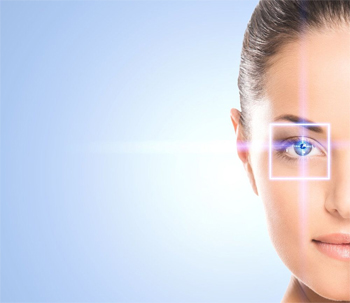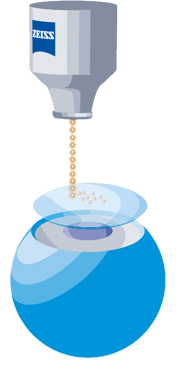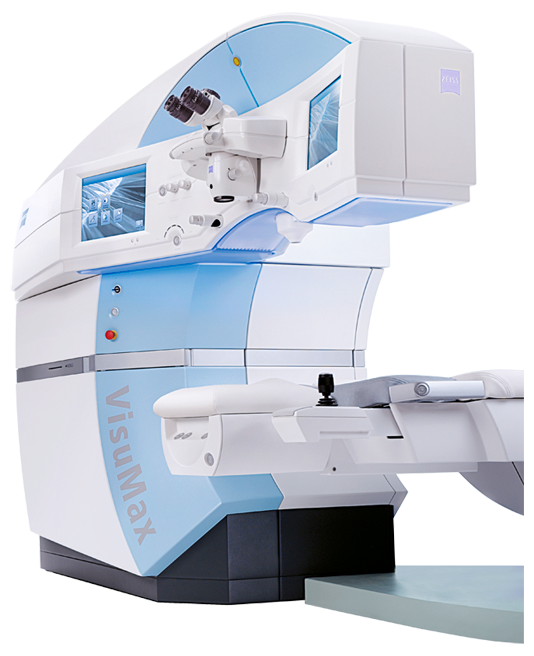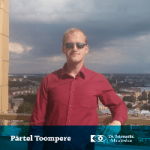20 016 968

Precise Vision
FEMTOLASIK
Enjoy the freedom from glasses and
contact lenses - thanks to laser eye surgery
with advanced technology from Carl Zeiss
1700€
REDISCOVER YOURSELF – THANKS TO VISION CORRECTION WITH ADVANCED TECHNOLOGY FROM CARL ZEISS
Perhaps you’ve already thought about a life without glasses or contact lenses and are keeping track of technological advances in laser treatment. Highly innovative and ultra-fast femtosecond laser technology has set a new milestone.
It makes the proven LASIK procedure even safer and more precise – for the first time it has become possible to perform the operation completely without mechanical cutting devices. This technology today enables the treatment of patients who were hitherto precluded from surgery because their cornea was too thin or vision defect too extreme
Free yourself from glasses and contact lenses!
Register today!
FEMTO-LASIK: A LIFE WITHOUT GLASSES, IN ONLY A FEW STEPS
Femto-LASIK is one of the up-to-date laser procedures for vision correction. Femtolaser technology means an even higher level of safety and precision: the ZEISS VisuMax is so accurate that you could write your name on a hair with it. In conjunction with the computer controlled ZEISS MEL 90 laser the cornea is reshaped so exactly that glasses become unnecessary.

WHAT IS A FEMTO LASIK?
FemtoLASIK, is one of the latest laser procedures for correcting near- and far-sightedness and astigmatism.
In contrast to conventional LASIK, in FemtoLASIK the incision in the cornea is not made with a mechanical cutter, but with the femtosecond laser. This new, even more precise method permits the treatment of patients who were hitherto precluded from LASIK surgery because their cornea was too thin or they had a pronounced vision defect.
What is a femtosecond laser?
The femtosecond laser works with ultra-short infra-red pulses. Each laser pulse lasts only a few femto seconds, one quadrillionth of a second. A femtosecond is 0.000,000,000,000,001 second.
How a femtosecond laser works?
The femtosecond laser focuses its energy to a precise, pre-determined depth in the cornea. Each ultra-short laser pulse produces a microscopic gas bubble which separates the surrounding corneal tissue. This physical procedure is referred to as photodisruption. Thousands of closely computer guided laser pulses join together and create a highly precise incision in the corneal tissue.
What Precise Vision LASIK with
Carl Zeiss technology can mean to you?
The Carl Zeiss VisuMax femtosecond laser sets new standards of precision. Minimal laser pulse energy, thanks to high-precision ZEISS optics, and a high pulse frequency enable a hitherto unsurpassed level of incision accuracy – in exactly the desired corneal depth.

*Femto-LASIK - Ultra-short laser pulses replace a mechanically created incision.
Testimonials

Käroli Michelson
The next morning the world was clear, my eyes didn't hurt and the eyesight was clear.

Liisi Värv
Laser eye surgery was one of the best investments I've made! The people there were friendly sweet and kind. The service was super!

Kaspars U.
After almost 20 years I see without glasses again. Now, from time to time, I imagine why I didn't do it faster.
VISUAL CORRECTIONS AT THE HIGHEST LEVEL:
VISUMAX FEMTOSECOND LASER BY CARL ZEISS
Carl Zeiss has been actively shaping the progress of refractive laser surgery for over 20 years. The VisuMax femtosecond laser makes LASIK surgery even safer, more accurate and gentle. In the following you will see all the advantages of the precision laser at a glance.
Possible incision-related complications due to a microkeratome malfunction are ruled out.
Highly-developed ZEISS optics ensures minimal energy into the eye. Surrounding cornea remains unharmed.
Extremely high precision in the creation of a corneal flap – even in patients with a thin cornea or serious vision defect.
Well-conceived – the new, curved VisuMax contact glass conforms to the natural shape of the cornea and prevents unnecessary stress on the eye.
Comfort factor – the two precision lasers, VisuMax and MEL 90 from ZEISS, both use a single, comfortable, patient supporting system. Particularly convenient for patients: The combination of MEL 90 and VisuMax avoids changing places between surgical steps.
Relaxed ambience – Discrete blue illumination creates a calming atmosphere during treatment.

- For clear vision the eyes, cornea and lens must be perfectly coordinated.
- Nearsightedness (myopia)
- Farsightedness (hyperopia)
- Astigmatism
Vision defects:
Light that goes astray
An eye with poor vision is like a camera that takes blurred pictures because the focal distance is not set properly.

The depth of the eye is too long or the refractive power of the cornea is too strong. The image on the retina is blurred because the point at which the light rays focus is in front of the retina.

The depth of the eye is too short or the refractive power of the cornea is too weak. The image on the retina is blurred because the point at which the light rays focus is behind the retina.

The cornea is unevenly curved and the light rays do not focus to a single point on the retina and are distorted.

Precise Vision Femto-LASIK Common questions and answers
No doubt you have many questions in advance of laser surgery. Here you will find answers to the most important questions. This information cannot and is not intended to substitute for a detailed consultation with your eye specialist. After a thorough examination he or she will tell you whether laser correction is the right solution for you. Of course, your specialist will also inform you about possible risks and side effects.
Free yourself from glasses and contact lenses!
Register today!




